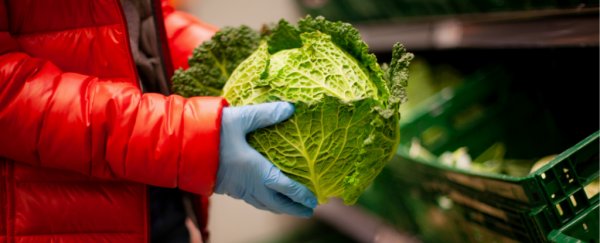The best ways to reduce your risk of getting COVID-19 are by now well known: wear masks, maintain social distance, and avoid crowded areas – especially those indoors.
But as public health experts have learned more about how the coronavirus spreads, it's become clear that some precautions probably aren't worth your time.
Letting letters and packages sit for days before opening them, for example, is most likely overkill, according to Rachel Graham, an epidemiologist at the University of North Carolina.
"I've never bothered about quarantining mail," she told Business Insider.
Here are six coronavirus precautions you may not need to bother with, according to Graham and other experts.
1. You don't need to wear gloves to the store
The coronavirus doesn't spread easily via contaminated surfaces, according to the Centres for Disease Control and Prevention, though a person can get infected if they touch a surface or object that has viral particles on it then touch their mouth, nose, or eyes.
Wearing gloves – disposable or otherwise – may seem like an easy way to keep your hands free of potential contamination at the grocery store. But CDC guidelines don't recommend gloves for running errands.
"I don't wear gloves in the store, but I wash my hands before I go and when I come back," Paul Volberding, an epidemiologist at the University of California, San Francisco, told The Washington Post in July.
Some experts are even concerned that glove wearing may give people a false sense of security when shopping.
"People think of gloves as magic bullets, and they are not. They are another source of contamination," Ravina Kullar, an epidemiologist with the Infectious Diseases Society of America, told New York Magazine last month.
She added that with gloves, you "may potentially be prone to touch your face more often."
2. Don't worry about disinfecting food packages – frozen or otherwise
In August, Chinese officials found traces of coronavirus on frozen food packages.
But those findings are probably not cause for concern, according to Michael Ryan, executive director of the World Health Organisation's Health Emergencies Program.
"People should not fear food, or food packaging or processing, and the delivery of food," Ryan said in a press briefing last month.
Caitlin Howell, a chemical and biomedical engineer at the University of Maine, said it's unlikely the virus would survive on frozen foods.
"It is possible, but the virus is not very stable outside the human body," she previously told Business Insider, adding, "freezing or refrigerating the virus can help to extend the period of time that it stays infectious, which is why we think that outbreaks at meatpacking plants were occurring so frequently, but transmission via surfaces still appears to be rare – even when those surfaces are frozen or refrigerated."
Elizabeth Connick, an immunolobiologist at the University of Arizona, told The Post that she doesn't disinfect and wash food packages, frozen or otherwise.
"I did that for about a week, then decided there would be more cases if the virus was transmitted that way. I don't think there is a lot of virus hanging around on those packages," Connick said.
3. Quarantining library books for three days is plenty
The lifespan of the virus on objects depends on the type of material: one study found that it took three hours for the virus to leave tissue and printing paper.
Given that, Graham said, libraries shouldn't worry much about quarantining books before returning them to circulation.
Research conducted in June showed that viral particles disappeared off common library materials after three days.
Scientists tested the virus' lifespan on the covers of hardcover and trade paper books, as well as paper pages inside a closed book, protective mylar book-cover jackets, and plastic DVD cases.
The results showed that after one day, the virus was gone from the book covers and DVDs. After three days, it was undetectable on the paper inside a book and the mylar book jackets.
"So anything more than [three days] is airing a little too far on the side of cautious," Graham said.
4. No need to quarantine your mail at all
It would be "astounding" if a single letter had enough viral particles on it to make you sick, Graham said. That's why quarantining the contents of your mailbox most likely isn't necessary.
Plus, letters often bake in mailboxes during the heat of summer, which would probably dry out any lingering virus and render it uninfectious, Graham added.
5. Cleaners and repair people can come to your home
Since the start of the pandemic, people have avoided bringing guests inside their homes. But most experts say it's alright to allow cleaners and repair people inside occasionally.
Anthony Fauci, director of the National Institute of Allergy and Infectious Diseases, told The Post that a cleaner comes to his house once every two weeks: "She wears a mask and gloves at all times while in the house," he said.
Connick and Fauci also said they have had hair dressers over to their homes for a quick trim.
6. It's alright to swim in a pool
Pools do not tend to become COVID-19 hotspots because the coronavirus doesn't spread through water – especially not in chlorinated pools, where the chemical "should inactivate the virus in the water," the CDC says.
"In general, respiratory pathogens don't survive in the water," Joseph Eisenberg, an epidemiologist at the University of Michigan's School of Public Health, previously told Business Insider.
Plus, because the coronavirus a respiratory virus, catching it usually involves inhaling it, not swallowing it, Eisenberg added. So swimming is relatively safe.
But William Schaffner, a professor of preventive medicine at Vanderbilt University, suggests avoiding locker rooms.
"Wear a mask when changing; get in, get out," he told Business Insider, adding, "you want to avoid prolonged, close contact with people indoors."
This article was originally published by Business Insider.
More from Business Insider:
